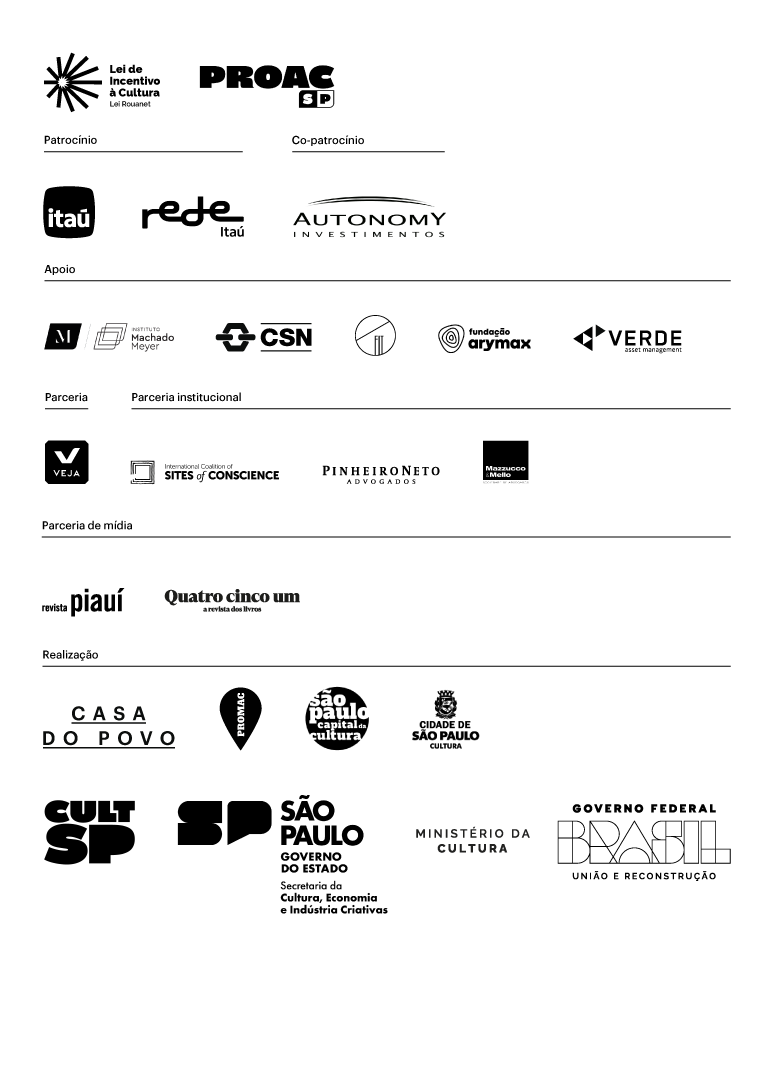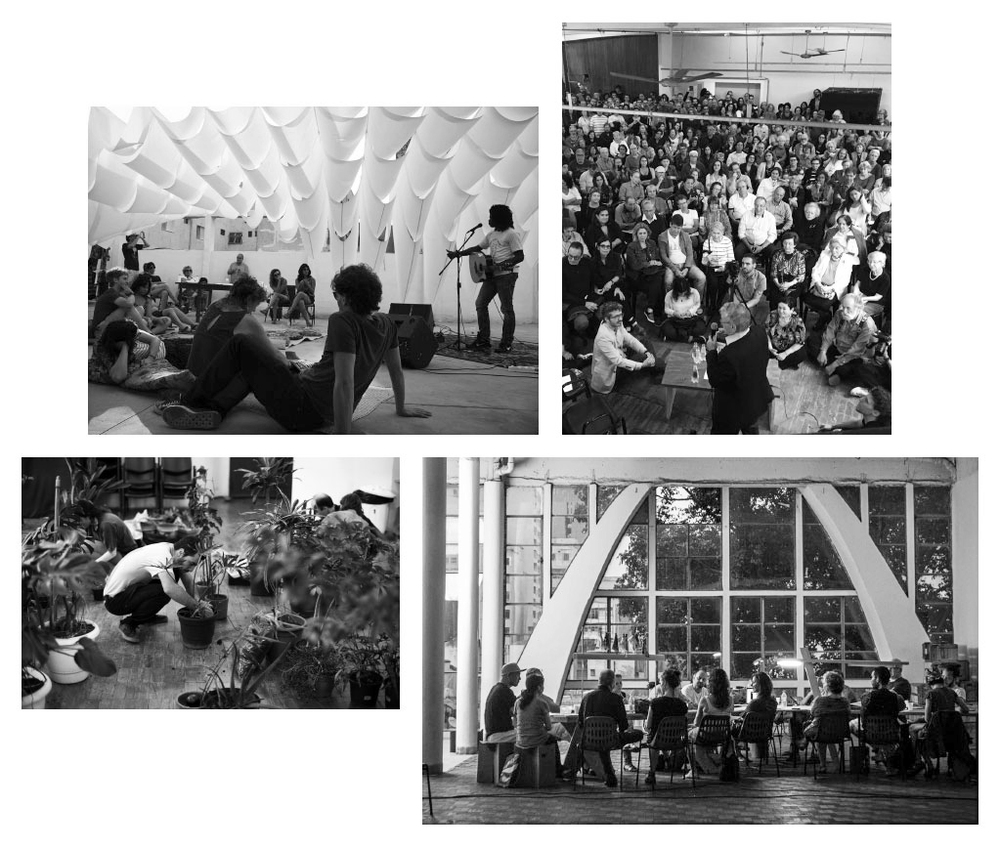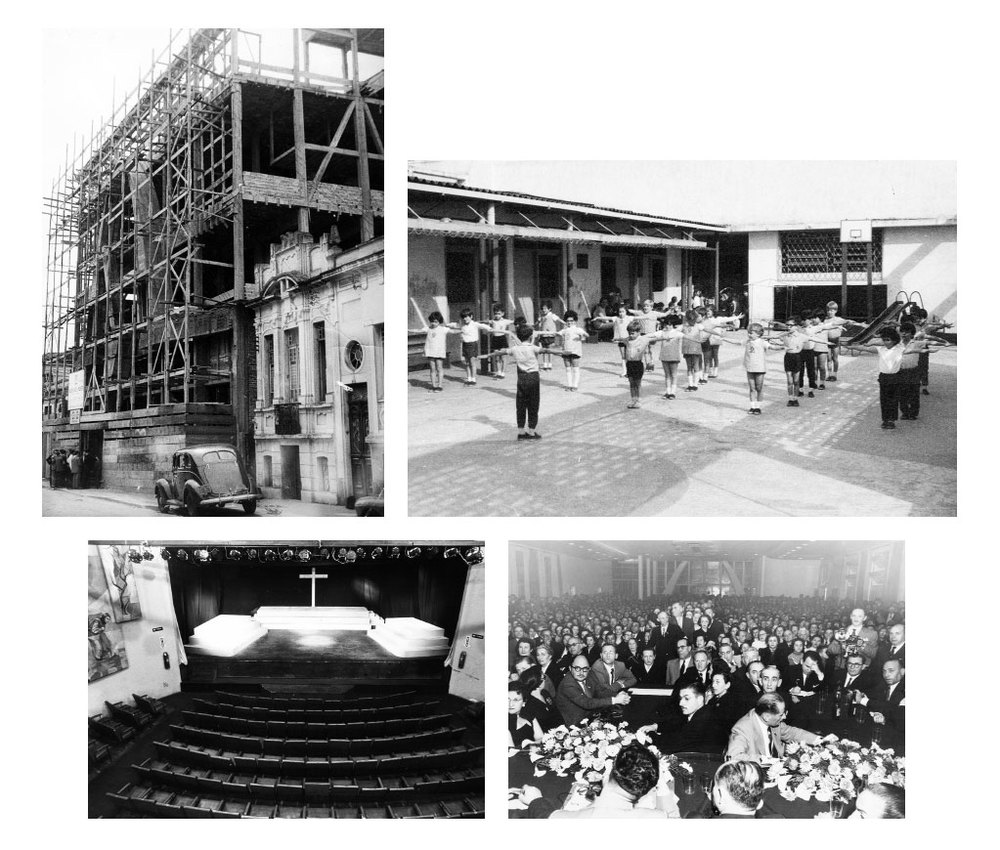Board of Directors
Director President Sarah Feldman
Director Vice President Miriam Biderman
Director Treasurer Iso Sendacz
Directors Inês Mindlin Lafer e Renato Cymbalista
Board of Trustees
President Laura Daviña
Trustees Daniel Douek, Eliana Finkelstein, Iara Rolnik, Inês Mindlin Lafer, Jairo Okret, Marina Sendacz, Ricardo Teperman, Vivian Altman
Comptroller Committee Ciro Biderman, Emil Eskenazy Lewinger, Renata Schmulevich
Staff
Artistic Director Benjamin Seroussi
Operations Director Marcela Amaral
Communication Ana Druwe, Laura Viana
Institutional Development Mônica Novaes Esmanhotto, Wallace Jesus
Production Francesca Tedeschi, Leonardo Monteiro, Olga Torres
Community Articulation Mayara Vivian
Archives Jean Camoleze, Caio Lescher, Anderson Oliveira
Financial Analyst Daniela Miranda
General Services Rafaela Temoteo da Silva
Security Mário Ferreira e Joel Cardoso (Grupo Pronto)
Past collaborators at Casa do Povo Alita Mariah, Amanda Caiuby, Chico Daviña, Daniel Lie, Eliana Vilaça de Souza, Erell Le Pape, Fabio Zuker, Fernanda Morse, Frederico Vergueiro Costa, Lourival Fialho, Lucas Rodrigues, Maiko Oliveira, Mariana Lorenzi, Marília Loureiro, Mila Zacharias, Milena Edelstein, Paul Duboc, Pedro Köberle, Rodolfo Bonifácio
Members
Benefactors
Cleusa Garfinkel
Supporters
Airton Bobrow, André Vainer, Arthur Hirsch, Célia Cymbalista, Clara Politi, Denise Grinspum, Eliana Finkelstein, Elisa Grinspum, Greta Sarfaty Marchant, Helena Katz, Helio Seibel, Inês Mindlin Lafer, João Manuel de Sousa Duarte Fernandes, Joyce Pascowitch, Lenina Pomeranz, Mauro Pergaminik Meiches, Miriam Biderman, Paula Clerman Bobrow, Paulo Kuczynski, Perola Kuperman Lancman, Renata Schmulevich, Roberta Saraiva Coutinho, Roberto Wolfenson, Sonia e Silvio Hotimsky, Stela Goldenstein, Susana Leirner Steinbruch, Tania Liberman, Tatiana Cymbalista, Telma Wajskop.
Basic members
André Degenszajn, André Vereta Nahoum, Benjamin Seroussi, Bianca Santana, Bianca Volpi, Carlos Frydman, Cecilia Reichstul, Ciro Biderman, Cláudio André Kahns, Daniel Douek, Diogo de Moraes Silva, Diva Sanovicz, Eliane Okret Diament, Emil Lewinger, Enio Alterman Blay, Esther Império Hamburger, Fernanda Brenner, Flávia Gleich, Gabriel Neistein, Helio Goldsztejn, Hugueta Sendacz, Iara Biderman, Iara Rolnik, Isa Grinspum Ferraz, Iso Sendacz, Jacques Grinspum, Jairo Okret, Jean Marcel Caum Camoleze, Joana Reiss Fernandes, Joana Zylbersztajn, José Orenstein, Julia Kovensky, Julia Rettmann, Leda Mariana M.S. Tronca, Lia Vainer Schucman, Lidia Nobel, Lilian Starobinas, Luiz Meyer, Luiza Minc, Malca Turchik, Marcela do Amaral Britto de Castro, Marcelo Hotimsky, Marcos Gorelik Ajzenberg, Maria Laura Daviña, Marilza Carvalho, Marina Sendacz, Matthieu Rougé, Mayara Longo Vivian, Michel Rosenthal Wagner, Moisés Goldbaum, Mônica Fagundes Klein, Nathaniel Braia, Nelson Kon, Nochem Sktinevsky, Paula Ester Janovitch, Paula Rodrigues Alves Signorelli, Paulina Cho, Peter Pal Pelbart, Raphaela Melsohn, Raquel Rolnik, Renato Cymbalista, Renato Sztutman, Ricardo Indig Teperman, Roberto Sanovicz, Rosa Iavelberg, Rosara Frenk, Rubens Kon, Samuel Seibel, Sara Cunha Lima, Sarah Feldman, Sergio Blasbalg de Arruda Sampaio, Sergio Suchodolski, Silvio Oksman, Tania Christopoulos, Tiago dos Santos Mesquita, Vivian Altman.


